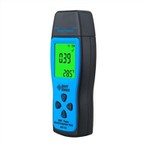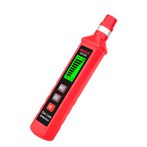What is the difference between the principle of measuring resistance with a megohmmeter (insulation tester) and a multimeter?
What is the difference between the principle of measuring resistance with a megohmmeter (insulation tester) and a multimeter?
A megohmmeter, also known as a megger, is primarily used to measure the insulation resistance of electrical equipment. It consists of an AC generator, a voltage doubling rectifier circuit, a meter head, and other components. When the megohmmeter is cranked, it generates DC voltage. When a certain voltage is applied to an insulating material, an extremely weak current flows through it, composed of three parts: capacitive current, absorption current, and leakage current. The ratio of the DC voltage generated by the megohmmeter to the leakage current is the insulation resistance. Testing whether insulating materials are qualified using a megohmmeter is called an insulation resistance test, which can detect whether the insulating material is damp, damaged, or aged, thereby identifying equipment defects. The rated voltages of megohmmeters include 250V, 500V, 1000V, 2500V, etc., with measurement ranges such as 500MΩ, 1000MΩ, 2000MΩ, etc.
An insulation resistance tester (also known as a megohmmeter, megger, or 摇表) consists of three main parts:
DC high-voltage generator: Used to produce DC high voltage.
Measurement circuit.
Display unit.
(1) DC High-Voltage Generator
Measuring insulation resistance requires applying a high voltage at the measurement terminals. According to national standards for insulation resistance meters, this high voltage is specified as 50V, 100V, 250V, 500V, 1000V, 2500V, 5000V, etc. There are three common methods to generate DC high voltage:
Hand-cranked generator: Used in approximately 80% of megohmmeters produced in China (the origin of the term "摇表" or "crank meter").
Mains-powered transformer step-up and rectification: Used in mains-powered megohmmeters.
Transistor oscillation or dedicated pulse width modulation (PWM) circuits: Used in battery-powered and mains-powered insulation resistance testers.





